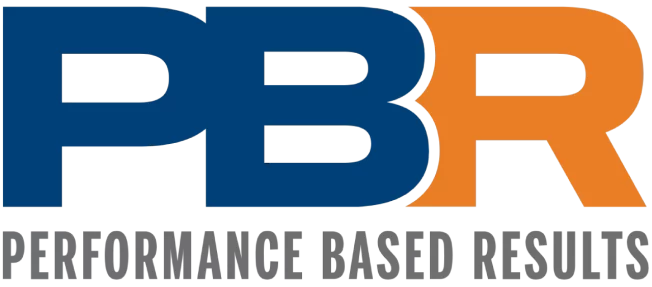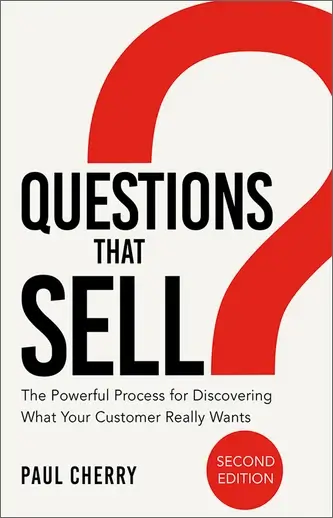Call reluctance is a common yet often misunderstood challenge for sales professionals. Essentially, it’s the hesitation or fear of making sales calls. This reluctance can stem from various factors, such as fear of rejection or lack of confidence.
For company leaders like Presidents, CEOs, and Sales Managers, addressing call reluctance within their teams is critical. Overcoming this obstacle can lead to increased sales performance, higher profits, and a more motivated sales force. In this article, we will explore the meaning of call reluctance, its causes, and effective strategies to conquer it.
Let’s dive into understanding and addressing this significant barrier to sales success.
What is a call reluctance?
Call reluctance is a form of anxiety experienced by sales professionals, causing them to hesitate or avoid making sales calls. This psychological barrier can significantly hamper a sales representative’s performance, leading to missed opportunities and reduced revenue. It’s a common issue that affects even the most seasoned salespeople, manifesting as procrastination, stress, or outright refusal to pick up the phone.
Understanding this phenomenon is crucial for detecting and addressing it early. A sales call reluctance test can help identify the severity of this issue, offering insights into specific triggers and areas requiring support.
By acknowledging and actively overcoming call reluctance, sales teams can enhance productivity, build stronger client relationships, and ultimately increase their success rates.
Common causes and symptoms
Call reluctance stems from various factors, both psychological and situational, leading to significant setbacks for sales professionals. Understanding these causes and symptoms is vital to tackling this productivity killer.
Common causes include:
- Fear of Rejection: The anticipation of hearing “no” can paralyze a seller;
- Lack of Confidence: Doubts about one’s selling abilities can cripple effectiveness;
- Previous Negative Experiences: Past failures create a mental block;
- Perceived Lack of Value: Believing the product or service isn’t worthy discourages effort.
Symptoms to look out for include procrastination, anxiety, and excessive preparation to avoid actual calling. Recognizing sales call reluctance is the first step toward overcoming it and boosting performance.
Impact on sales performance
Call reluctance can significantly impact sales performance, reducing the efficiency and success rates of sales professionals. Hesitation to pick up the phone or engage in direct communication often leads to missed opportunities, lower sales numbers, and a decrease in overall productivity.
Overcoming call reluctance is crucial to ensuring a steady and proactive approach to prospecting and closing deals. A sales team gripped by call reluctance will struggle to maintain consistent performance, ultimately affecting the company’s revenue and growth potential.
By addressing this issue head-on, businesses can foster a more confident sales force, equipped to handle cold calling and other direct interactions efficiently, thereby improving their sales outcomes and competitive edge in the market.
Identifying the root causes
Understanding and identifying the root causes of call reluctance is essential to effectively address and overcome it. By pinpointing specific triggers, such as fear of rejection or previous negative experiences, sales professionals can develop targeted strategies to boost their confidence and improve performance. By conducting a thorough analysis, such as a sales call reluctance test, one can uncover underlying issues affecting productivity and work toward overcoming call reluctance for better sales outcomes.
Fear of rejection
Fear of rejection is a significant contributor to call reluctance, particularly in a B2B environment where sales cycles are lengthy and relationships are crucial. This fear often stems from previous negative experiences or the perception that one’s offer is not valuable enough.
Sales professionals may dread the possibility of hearing “no,” causing them to procrastinate or avoid making calls altogether. To combat this, it’s essential to reframe rejection positively.
Understand that a “no” is not a personal rebuff but a step closer to a “yes.” Additionally, developing a robust script and leveraging advanced listening skills can help navigate conversations more effectively, making rejections less daunting and more manageable.
Lack of confidence
A common root cause of call reluctance is a lack of confidence. It’s more than feeling nervous; it’s a deep-seated belief that you might not be good enough or skilled enough to succeed.
For sales professionals, this can be particularly debilitating, as it directly impacts their ability to make impactful connections with prospects. Building confidence isn’t just about faking it till you make it—it’s about acquiring the right skills and knowledge to feel genuinely competent.
Continuous learning, seeking mentorship, and celebrating small wins can significantly boost self-assurance. When you believe in your abilities, it naturally translates into your voice and approach, making every call a more positive and productive experience.
Previous negative experiences
We’ve all faced it. You’re on the brink of picking up the phone to call a promising lead, but an overwhelming wave of uncertainty sweeps over you. As a million “what-ifs” play in your mind, you look around and notice other salespeople confidently making calls and enjoying their interactions.
“How does it come so easily to them?” you wonder. You sit there, clutching your phone nervously, and decide to double-check your CRM to ensure all your contact information is accurate, instead of making the call.
Deep down, you realize you should be dialing, but this paralyzing anxiety feels insurmountable. This form of sales call reluctance often stems from negative past experiences, which can significantly impact your confidence and willingness to engage with leads.
Perceived lack of value
When sales professionals feel their efforts aren’t appreciated, it can lead to call reluctance. This “perceived lack of value” stems from the belief that their offerings aren’t significant or appealing enough to the prospect.
This negative mindset can be compounded by a mismatch between the salesperson’s understanding of their product’s benefits and the prospect’s needs. To combat this, it’s crucial to align the sales pitch with the true pain points of the potential client.
Emphasizing the unique selling propositions and showcasing real-life success stories can bridge the gap. For example, detailed case studies highlighting how other businesses have benefitted can provide tangible proof of value, reestablishing the salesperson’s confidence in their product’s worth.
Strategies to overcome call reluctance
Conquering call reluctance involves a strategic approach tailored to empower sales professionals. Adopting effective techniques can help individuals build confidence, develop a positive mindset, and enhance their skills. Incorporating role-playing and practice sessions, setting realistic goals, and tracking progress are crucial steps.
By implementing these strategies, sales teams can overcome their fears and significantly improve their calling performance, ultimately leading to higher sales and enhanced productivity. Let’s delve into these strategies further to understand their impact and application.
Building confidence and skills
Confidence and skills are the backbone of successful cold calling. To build them, start by understanding your product inside and out. The more knowledgeable you are, the more confident you’ll sound. Next, develop your communication skills. Practice active listening and clear, persuasive speech. Engage in regular training sessions to refine your techniques.
Role-playing can also be incredibly beneficial. Simulate real-life scenarios with a colleague to prepare for various situations. Focus on handling objections gracefully and turning them into opportunities.
Internalizing positive affirmations and visualizing successful calls can significantly enhance your confidence. This mental preparation plays a crucial role in boosting your performance.
Remember, preparation and practice are key to mastering sales skills and boosting self-assurance. By investing time in these areas, you’ll find that your ability to connect with prospects and close deals will dramatically improve. Your journey to confidence starts with a single step—take it today!
Developing a positive mindset
Developing a positive mindset is crucial in overcoming call reluctance and boosting your sales performance. To begin with, understand that reluctance meaning a form of mental resistance is common but conquerable. Recognize the power of positive thinking and how it impacts your overall approach to sales calls. Start by setting achievable goals and celebrating small wins. Replace negative self-talk with affirmations that reinforce your capabilities. Visualize successful interactions and outcomes before making each call.
Additionally, maintain a growth mindset by viewing challenges as opportunities for improvement, thus reducing sales call reluctance. Engage in regular mental exercises like mindfulness and meditation to keep stress levels in check and foster a resilient attitude. By consistently nurturing a positive mindset, you’ll find your call reluctance diminishing and your confidence soaring, paving the way for more successful sales engagements.
Role-playing and practice
Role-playing and practice are essential strategies for overcoming call reluctance. Through role-playing, sales professionals can simulate real-life calling scenarios in a safe and controlled environment.
This technique allows them to hone their responses, improve their pitch, and build confidence without the pressure of genuine stakes. Practicing regularly helps to refine these skills, making them second nature during actual calls.
Moreover, receiving constructive feedback during practice sessions can pinpoint areas needing improvement and bolster overall communication techniques.
Embracing role-playing and practice ensures that sales teams are prepared, confident, and capable of handling various customer objections and inquiries, ultimately enhancing their performance and productivity.
Setting realistic goals and tracking progress
Setting realistic goals and tracking progress is essential for overcoming call reluctance and achieving sales success. To begin, set achievable, measurable goals that align with your broader sales objectives. For instance, aim for a specific number of calls per day or week.
This strategy ensures that your targets are attainable and avoid the frustration of setting excessively ambitious goals.
Once goals are set, implement a tracking system to monitor progress. Use spreadsheets, CRM software, or goal-tracking apps to log daily activities and outcomes. Reviewing this data regularly helps identify patterns, celebrate milestones, and adjust strategies as needed.
This process keeps you accountable and boosts confidence by showcasing incremental successes.
In conclusion, setting realistic goals and tracking progress creates a structured path toward increased sales performance, making call reluctance a challenge you can manage effectively.
Techniques for effective cold calling
Effective cold calling is crucial for B2B sales success, especially when aiming to overcome call reluctance. It’s about engaging prospects and building meaningful connections, not just making a sale.
Key techniques for effective cold calling include crafting an engaging script, utilizing personalization to create rapport, handling objections professionally, and following up to build relationships.
These strategies will transform your cold calls into valuable opportunities, boosting your sales performance and confidence.
Crafting an engaging script
Creating a compelling script is essential for effective cold calling. An engaging script can help you capture your prospect’s interest and convey your message with clarity and impact. Start by addressing the prospect by name, which immediately personalizes the conversation.
Introduce yourself and your company succinctly, focusing on how you can solve a specific problem they might have. Your script should include open-ended questions that encourage dialogue and uncover needs.
Use a conversational tone and avoid sounding too scripted. This approach keeps the interaction natural and engaging. Remember, the primary goal of your script is not just to sell, but to establish a connection and build rapport, setting the stage for a meaningful business relationship.
Using personalization to connect
Personalization is a key strategy to enhance your effectiveness in cold calling. By tailoring your message specifically to the prospect, you create a more engaging and relevant conversation. Start by researching the company and the individual you’re calling.
Use their name and reference specific details about their business or challenges they might be facing. Mention recent news, industry trends, or common pain points to show that you understand their unique situation.
This approach builds rapport and demonstrates your genuine interest in their success.
By personalizing your communication, you increase the chances of making a meaningful connection, which can ultimately lead to higher conversion rates and better sales outcomes.
Handling objections professionally
Handling objections professionally is a vital skill for overcoming call reluctance and ensuring successful sales interactions. To start, acknowledge the objection to show that you respect the prospect’s concerns.
This builds trust and opens the door for further conversation. Next, reframe the objection to highlight a positive aspect or clarify any misunderstandings. Use phrases like, “I understand your concern, however…” to smoothly transition the conversation.
Equip yourself with robust knowledge of your product or service and offer data or testimonials to support your rebuttal. Lastly, always ask follow-up questions to maintain engagement and gain deeper insights. Mastering these techniques not only helps in overcoming call reluctance but also boosts your confidence during sales calls.
Following up and building relationships
Following up and building relationships is a crucial strategy in sales, especially in B2B contexts where transactions can span several months. Effective follow-up is not just about persistence but also about showing genuine interest in your prospect’s needs and business.
Start by scheduling regular check-in calls, personalized to reflect previous conversations and the prospect’s unique challenges. This consistency helps build trust. Additionally, provide value in each interaction, whether it’s sharing relevant industry insights or connecting them with useful resources.
Gradually deepen the relationship by focusing on building rapport, asking insightful questions, and actively listening. Remember, the goal is to be seen as a trusted advisor rather than just a salesperson.
Maintaining motivation and focus
Staying motivated and focused is pivotal for overcoming call reluctance and achieving sales success. Establishing a structured routine can help create consistency and reduce anxiety. Implementing a reward system provides incentives for reaching milestones, while seeking support and feedback from peers and mentors can offer encouragement and constructive advice.
Consistently maintaining these practices can significantly enhance your productivity and confidence, ultimately leading to improved sales performance.
Creating a structured routine
Creating a structured routine is vital in overcoming call reluctance. By organizing your daily activities, you create a predictable, manageable workflow that reduces anxiety. Start by setting specific times for making sales calls within your schedule.
Allocate blocks of time for preparation, calling, and follow-up. Consistently adhering to this routine can help build momentum and make the task feel less daunting, ultimately enhancing your productivity and efficiency.
Implementing reward systems
Implementing reward systems can significantly boost motivation and focus among sales teams. Start by identifying the specific goals and behaviors you want to encourage, such as meeting sales targets or improving customer interactions.
Create a variety of rewards to cater to different preferences; these could range from monetary bonuses to extra vacation days or public recognition. Make sure the reward system is transparent and fair, clearly communicating the criteria for earning rewards.
Regularly review and adjust the system based on feedback and performance metrics. By implementing effective reward systems, sales teams stay motivated and driven, leading to increased productivity and better sales results.
Seeking support and feedback
One of the most effective ways to combat call reluctance is by seeking support and feedback from peers, mentors, and supervisors. Networking with fellow sales professionals allows you to discuss common challenges and share strategies that work.
Regular feedback sessions with a mentor or coach can provide you with valuable insights into your performance and areas for improvement. They can help pinpoint specific barriers, offer constructive criticism, and celebrate your progress.
When you realize you’re not alone in facing these challenges and have a support system, your confidence naturally improves. Also, constructive feedback can help you sharpen your skills and stay motivated, ultimately leading to better sales performance and reduced reluctance in making those crucial calls.
Wrap up
Overcoming call reluctance is crucial for sales professionals aiming to boost their performance and drive results. By understanding the meaning of reluctance, recognizing common causes such as fear of rejection, lack of confidence, and previous negative experiences, you can take targeted steps to address these issues.
Implementing strategies like building confidence, practicing role-playing, and setting realistic goals helps in managing sales call reluctance effectively. Additionally, mastering techniques for effective cold calling, such as crafting engaging scripts and handling objections, is fundamental.
Maintaining consistent motivation through structured routines and reward systems ensures long-term success. By addressing the root causes and actively working on improvement, you can transform your approach and achieve greater sales success.






